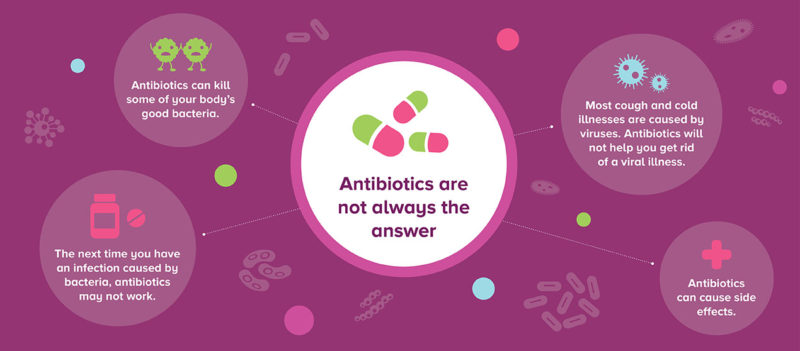Every season has its own set of respiratory illnesses that can cause problems for kids — especially for those with asthma. Most years the number of children having asthma exacerbations (flares) is highest in the fall. This is usually around the time when kids go back to school. That said, it can happen during other times of the year, too. There is often an uptick in asthma flares in the spring; typically when they leave or return from spring break. Winter can also be hard, since viruses like rhinovirus (the common cold) and influenza (the flu) are common during this season.
In fact, rhinovirus causes from 50-85% of asthma exacerbations in kids. Many of these kids will need to see a healthcare provider, such as at their pediatrician’s office, urgent care or ER, for treatment and help managing their symptoms.
While we don’t fully understand why respiratory illnesses are often worse for kids with asthma, research is ongoing to understand these exacerbations further. Here’s what we do know about this challenging combination:
Asthma & Respiratory Illnesses: 5 Things to Know
1. What happens in the lungs
When a child with asthma gets a viral respiratory illness, the virus will get into the cells in the lining of the lungs. The immune system then sends infection-fighting cells (such as lymphocytes, neutrophils and eosinophils) and substances (cytokines, mucus) to attack it and help the lungs clear the virus. Depending upon the virus and the body’s response, this can look like a mild cough and runny nose to severe wheezing that might need hospitalization.
2. Allergies can play a role
Kids with allergies and asthma can have more severe and possibly more frequent viral illnesses. This means that if your kids have both allergies and asthma and they get a cold, they’re more likely to have an asthma exacerbation. Similarly, kids whose allergies are not under control are more likely to have breathing problems when they get sick.
3. The worst offenders
Rhinovirus, or the common cold, is the most common respiratory virus for older kids and teens with asthma. There are two types of rhinoviruses that cause issues: A and C. Typically, rhinovirus C has been associated with an increased risk for hospitalization. Researchers are currently trying to understand why rhinovirus C is more problematic. During the year, rhinovirus infections most often occur in the fall and spring but may also occur at any time of the year. For infants, the most common cause of wheezing is RSV, or respiratory syncytial virus. Another name for the illness that RSV causes in kids is bronchiolitis. This illness tends to occur in infants in the winter months.
4. The best prevention methods
The best way to prevent a virus-induced asthma attack is to take your allergy and asthma medications as they are prescribed. Unfortunately, only 30-70% of people with asthma take their medications as they’re supposed to. Also, your child should have and follow an asthma action plan that was created by your asthma healthcare provider.
This is a plan that you can create with your child’s healthcare provider to add additional steps to your treatment plan at the first sign of an illness or worsening of asthma symptoms. The recommendations are separated by green, yellow and red zones (like a stoplight). There is even some data to suggest that starting rescue medications, such as albuterol, early can prevent severe exacerbations and help people get over their cold faster if they have asthma. This is what we call a yellow zone plan (first signs of illness or worsening of asthma symptoms).
Other prevention methods include identifying additional factors that can trigger or worsen your child’s asthma. This includes allergies, gastrointestinal reflux disease (GERD), sinus problems, sleep apnea and obesity. Making sure that these are treated can help lower the risk of an asthma exacerbation when a child gets sick with a virus. Finally, we can help children understand the importance of preventing viral illnesses in the first place by encouraging proper hand hygiene.
5. When to call your child’s doctor
Having an action plan in place will help you determine which symptoms warrant a call or visit to your child’s doctor. Typically, it’s best to call the doctor when your child is not responding to medicines in the yellow zone after about 24-48 hours (each plan is individualized) but earlier if needed. Symptoms could include wheezing, chest tightness, and coughing that is not improving or worsening, or if they need their rescue medicines more frequently than every four hours.
Certainly, if your child is in the red zone get help right away — to go an emergency room or call 911. Red zone symptoms include:
- Trouble speaking or walking
- Blue or grey-looking lips or nails
- Pulling in neck or ribs during breaths
The key is to stay in close communication with your child’s doctor, have them take their medicines as prescribed in the green zone, and follow the plan when sick. Additionally, keep their asthma check-ups as recommended by their asthma provider. At those appointments, parents can have a conversation about their child’s level of asthma control, severity, and adjust the plan as necessary.
To learn more about our Asthma Center, please call 513-636-4676 or visit our website.





